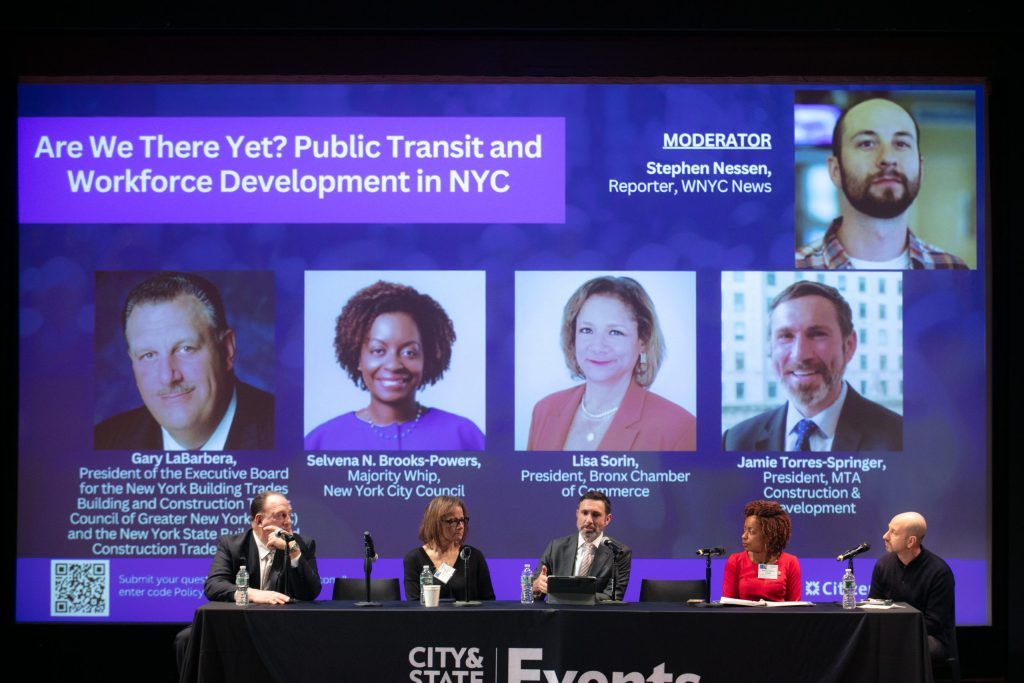
NYC’s Workforce Agenda

The 2024 New York City Employment and Training Coalition (NYCETC) conference took place over two days in December. The get-together brought labor leaders, employers, politicians, educators, and workforce coordinators together to talk about where the city is headed and what kind of employment future New Yorkers will be engaged in.
The conference was designed to focus on workforce development for the future, says NYCETC CEO Greg Morris. “What…was focused on was if you are in the workforce development space, if you are seeking talent and employers, let’s talk about how we do that work and do that work well, especially given the reality that industries –– the industries that are growing in New York City, whether it’s the green economy conversation, whether it’s the expansion of healthcare, or whether it’s related to tech and AI, automation, etc. –– let’s have a conversation about what, in terms of practice, what we’re doing well, what we can do more of to support New Yorkers who are seeking jobs, seeking transition to new jobs, and how it is that we ensure that the employers in New York City have the talent they need to both reflect their interests and their desire to create value and impact, that they represent the equity, inclusivity, and accessibility that we expect for New Yorkers.”
New York City’s employment recovery from the COVID-19 pandemic has been impressive. The most recent Bureau of Labor statistics showed that health and education were the fastest growing sectors. New hires in those industries don’t always make salaries that can afford them a comfortable life in the metropolitan area. Meanwhile, the New York City Economic Development Corporation (EDC) recently reported that the city has “record-high employment figures…and growth in new, innovative sectors like the life sciences, green economy, and tech.” Those industries, which pay significantly higher salaries, have traditionally employed fewer people of color.
New York City’s labor force participation reached 62.8% as of September 2024, but “unemployment rates for Black and Latino New Yorkers stood at 8.5% and 6.7% in the third quarter of 2024 [respectively], significantly lower than their pandemic peak but still higher than the white unemployment rate of 3.3%,” the EDC report notes. “While the labor force participation rate has improved for New Yorkers of all races since 2022, the white labor force participation rate, at 67.5% in Q2 2024, is well above the rates for other races and ethnicities.”
NYCETC represents organizations that try to ensure that all New Yorkers have access to training opportunities, for the jobs developing for New York’s future,” Morris said. “And if we need to build a scaffolding for folks to get ready, that’s what we want to do. So, for Black and Brown New Yorkers, for any type of person seeking a pathway to a future, that’s what we’re about.
“When we look at the wage data for how it is that Black and Brown New Yorkers in particular are underpaid compared to their white peers, unemployment numbers are greater for Black and Brown New Yorkers than for white folks. That’s something we need to be constantly focused on addressing. …That’s what the workforce agenda that we’re trying to build will seek to reflect.”
The post NYC’s Workforce Agenda appeared first on New York Amsterdam News.